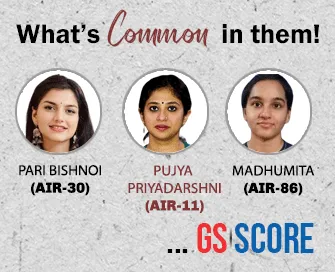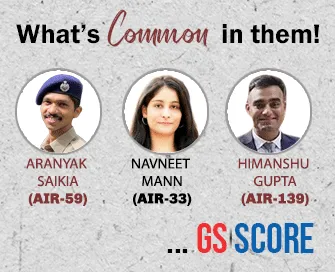

27th June 2025 (13 Topics)
Mains Issues
Context
The Shanghai Cooperation Organisation (SCO) defence ministers’ meeting couldn’t issue a joint communique on 26th June after India refused to endorse the document because it didn’t address its terrorism-related concerns.
More about the news:
- The defence minister attended the meeting at Qingdao in China, refused to sign the joint communique as it was silent on the April 22 Pahalgam terror attack.
- The communique, however, mentioned Balochistan and the hijacking of the Jaffer Express by Baloch militants.
- Pakistan’s insistence on not having any reference to the Pahalgam attack, while retaining the reference to the situation in Balochistan, stymied the finalisation of a joint statement.
- The SCO works by consensus, and a joint communique cannot be issued if even one member state doesn’t endorse it.
- China, the current president of the SCO, has deep military and strategic ties with Pakistan, which it strongly supported during the recent four-day clashes with India under Operation Sindoor.
India’s Call for Unified Action Against Terrorism
- In his address at the SCO summit, the defence minister urged member states to unite against terrorism in all its forms, emphasising that perpetrators, organisers, financiers, and sponsors of terrorism must be held accountable.
- He stressed that peace and prosperity cannot coexist with terrorism or the proliferation of weapons of mass destruction in the hands of non-state actors.
- His call for decisive action underscored the need for SCO members to align in strengthening regional stability and security.
Role of Regional Anti-Terrorist Structure (RATS) in Countering Radicalisation:
- Coordination and information sharing: RATS serves as a platform for SCO member states to share intelligence on terrorist activities and radicalisation trends.
- Countering Extremist Propaganda: It has been recognised for its work in the cyber domain, particularly in preventing the spread of extremist propaganda online.
- Policy and Strategy Development: RATS facilitates the adoption of anti-terror measures, such as the SCO Council’s joint statement on “Countering Radicalisation Leading to Terrorism.”
- Capacity Building and Training: RATS conducts joint training programs and exercises to enhance the capabilities of law enforcement and security agencies in SCO member states.
Challenges faced by SCO:
- Diverse Interests and Geopolitical Rivalries: The SCO comprises countries with differing political systems, economic priorities, and strategic goals, such as China, Russia, India, and Pakistan. Conflicting interests, like the India-Pakistan rivalry, hinder cohesive decision-making.
- Counterterrorism and radicalisation challenges: The SCO’s Regional Anti-Terrorist Structure (RATS) faces difficulties in addressing evolving terrorist tactics, including online radicalisation and cross-border extremism.
- Uneven Economic Capacities: Member states have different economic strengths, with China dominating trade and investment initiatives. Smaller economies like Kyrgyzstan and Tajikistan struggle to benefit equally.
- Sanctions and Global Dynamics: Sanctions on Russia and concerns over China’s global influence affect the SCO’s ability to engage with international financial systems and attract investment.
- Regional Instability: Central Asian member states face internal challenges like political instability, corruption, and ethnic tensions, which undermine SCO initiatives.
Shanghai Cooperation Organisation (SCO)
|
UPSC PYQQ. ‘Virus of Conflict is affecting the functioning of the SCO’ In light of the above statement, point out the role of India in mitigating the problems. (2023) |


Mains Issues
Context
A first-of-its-kind trilateral meeting was held in Kunming, China involving Bangladesh, China, and Pakistan. Though informal, it signals an emerging alignment in South Asia that may impact India’s strategic space. Just a few days later, India’s Ministry of External Affairs (MEA) announced that it is open to discussing all bilateral issues with Bangladesh in a “conducive environment”.
Historical Context and Strategic Importance
- India and Bangladesh share a 4,096-km border, making their relationship critical for regional stability and security.
- The 1971 Liberation War, where India played a pivotal role in Bangladesh’s independence, laid the foundation for strong ties.
- Bangladesh is India’s largest trading partner in South Asia, with bilateral trade reaching USD 12.9 billion in 2022-23.
- Initiatives like the India-Bangladesh Friendship Pipeline and the Akhaura-Agartala rail link highlight the deepening economic integration.
What’s changing in Bangladesh's Foreign Policy?
Since the interim regime replaced Sheikh Hasina’s Awami League in August 2024, Bangladesh’s foreign policy has taken a new direction:
- Earlier, Bangladesh maintained a pro-India tilt, ensured that India’s security concerns (e.g., border, insurgency) were addressed, and prioritized India for infrastructure and connectivity projects.
- Now, the interim government is:
- Deepening military and trade ties with Pakistan, despite the legacy of the 1971 Liberation War.
- Actively welcoming Chinese investments and military cooperation, including in strategic areas near India’s Siliguri Corridor.
- Trying to reduce reliance on India and look for new partners in the region, particularly China.
This shift away from India is not just symbolic; it’s institutional and strategic.
What actually happened?
- The meeting was at the official (bureaucratic) level, not at a political or head-of-state level.
- Bangladesh clarified that:
- There was no political agenda or alliance-building.
- It was not intended to target India or any other third country.
Significance of Kunming Trilateral for India
Even if the meeting was informal, there are strategic signals that India must carefully observe:
- China’s Increasing Role in South Asia: China has been using platforms like the China-South Asia Cooperation Forum to engage South Asian countries beyond India (e.g., Nepal, Bangladesh, Sri Lanka, Maldives).
- This is seen as part of Beijing’s strategy to reduce India’s traditional influence in its neighbourhood.
- Pakistan-China Axis with a Third Player: Pakistan is already a close strategic and economically of China (especially under the CPEC – China-Pakistan Economic Corridor). Inclusion of Bangladesh, even informally, adds to China-Pakistan’s regional diplomacy efforts, and may shift balance in regional cooperation formats.
- Bangladesh’s Strategic Autonomy: Bangladesh is trying to balance ties between India (its largest neighbour) and China (its biggest trading partner).
- While it has close civilizational and economic ties with India, it also receives major infrastructure investments from China.
- It’s being careful not to appear aligned too closely with either.
Implications for Regional Groupings
- India is part of SAARC (which is largely dysfunctional due to India-Pak tensions) and BIMSTEC (which excludes Pakistan).
- China is now attempting to shape its own South Asia platform, which could evolve into an alternate cooperation mechanism to India-led regional formats.


Prelims Articles
Context
Bonalu festival, which symbolises the unique culture of Telangana, began recently. This month-long festival, deeply rooted in the socio-religious fabric of the region, is a significant marker of Telangana’s identity.
What is the Bonalu Festival?
- Bonalu is a traditional Hindu festival celebrated in Telangana, especially in Hyderabad, Secunderabad, and surrounding regions. It is dedicated to Goddess Mahankali and is marked by colorful rituals, vibrant processions, and community feasting.
- Key Features:
- It is celebrated during the Ashada month (June–July), considered inauspicious for ceremonies but sacred for goddess worship.
- Offerings: Women prepare and carry decorated pots called "Bonam", filled with cooked rice, jaggery, curd, and neem leaves, as offerings to the goddess.
- Significance: Believed to have originated over 150 years ago after a cholera epidemic, as a way to appease the goddess for protection.
- Main Locations:
- Starts at Golconda Fort (Golconda Bonalu)
- Followed by Lashkar Bonalu in Secunderabad
- Culminates at Lal Darwaza and Haribowli in the Old City
- Cultural Elements: Includes processions, Pothurajus (guardians of the goddess), drummers, and devotees dressed in traditional attire.
- Government Support: In 2025, the Telangana government allocated ?20 crore to support the celebrations.
Cultural and Religious Significance:
- Bonalu showcases the regional identity and devotional culture of Telangana. It reflects the community’s collective memory of overcoming epidemics through faith, tradition, and collective ritual.
- It's also a powerful example of how folk traditions blend with state support in modern Indian religious festivals.


Prelims Articles
Context
The Registrar General of India (RGI) has directed all States to ensure that birth certificates are issued before the discharge of newborns from hospitals, particularly government hospitals, where over 50% of institutional births take place.
This comes in the context of the amended Registration of Births and Deaths (RBD) Act, 1969, which came into effect from October 1, 2023.
What is the Birth Registration Law About?
- The Registration of Births and Deaths Act, 1969 makes it mandatory to register all births and deaths in India.
- A 2023 amendment to this Act introduced significant changes:
- All registrations must now happen through a centralised digital portal maintained by the Centre.
- The digital birth certificate issued under this system is now the single official document for proving date of birth for:
- Admission in schools
- Government jobs
- Passport issuance
- Marriage registration
- Electoral rolls
- NPR and ration cards
What Has the RGI Directed Now?
- The birth certificate should be issued immediately after registration is completed, but not later than 7 days after the birth.
- The certificate can be issued in electronic or physical format.
- The RGI wants the certificate to be handed over to the mother before she is discharged from the hospital — especially in government-run hospitals, community health centres, and PHCs.
Why This Push Now?
- The utility of birth certificates has increased immensely since the October 2023 amendment.
- Birth certificates now integrate directly with national databases — NPR, voter list, property registration, and more.
- The idea is to make the process efficient, accessible, and people-friendly.
- There have been compliance gaps:
- In March 2025, the RGI warned medical institutions about delays in registering births and deaths.
- A worrying 10% of births were still not being registered.


Prelims Articles
Context
The CBSE has recently released guidelines to implement the National Education Policy (NEP) 2020’s recommendation to teach children in their mother tongue or regional language till Class 5. However, the board has clarified that schools, especially in metros with linguistic diversity, will be given time and support to gradually adopt this change.
What does the policy say?
- The NEP 2020 recommends that children be taught in their mother tongue/local language till at least Grade 5, and preferably till Grade 8, to help them learn concepts better at a foundational stage.
- CBSE’s new guideline is aimed at putting this into practice, but not through immediate enforcement.
Challenges in Implementation
- Linguistic Diversity in Metros: In metropolitan cities like Delhi, Mumbai, Bengaluru, and Pune, students come from diverse linguistic backgrounds — Marathi, Bengali, Telugu, Assamese, Urdu, Hindi, etc.
- A single school may have to cater to multiple mother tongues, making multilingual instruction logistically difficult.
- Dialect Variations: Even within a single language, students may speak different dialects. For example, Bihar has Magahi, Bajjika, Angika, and Awadhi, making it hard to choose one standard medium.
- Curriculum & Resource Gaps: Developing subject-specific textbooks and training teachers to deliver non-language subjects like Maths and Science in different mother tongues is a huge task.
- Teacher Training and Capacity: Teachers trained in English-medium instruction may not be proficient in teaching complex subjects in regional languages.
- Parental Preferences: Many parents prefer English-medium education for better career prospects, making the shift to mother tongue instruction controversial in urban areas.
CBSE’s Response and Strategy
- No Penalty for Delay: CBSE Chairman Rahul Singh clarified that schools will not be penalised or lose affiliation if they take time to implement the language shift.
- Phased Rollout: Emphasis on flexibility. Implementation is expected to be gradual and adapted to local needs.
- Language Mapping Exercise: Schools have been asked to map the language preferences of their students. For instance, if most children in a class speak Kannada, Maths or EVS can be taught in Kannada.
- Webinars and Training Workshops: CBSE is conducting training sessions to help schools prepare curriculum, teacher support, and pedagogical materials.
- Class-Specific Focus: The current guideline is only for up to Class 5. Language decisions for senior classes will be framed later based on NCERT’s revised curriculum under the National Curriculum Framework (NCF).
Ground Reality from Schools
- Vibgyor Roots and Rise School, Pune: Of 1,190 students, 60% speak Marathi, but the rest come from diverse linguistic backgrounds. The school says it will need a detailed strategy to handle curriculum and instruction in multiple languages.
Steps taken by India to preserve and promote mother tongue:
|


Prelims Articles
Context
The Jal Jeevan Mission’s target year has been officially revised from 2024 to 2028, as confirmed by the Union Water Resources Minister on June 26, 2025. The delay is attributed to infrastructure gaps, increased household demand, and the insufficiency of groundwater sources.
What is Jal Jeevan Mission?
- Launched in August 2019, the Jal Jeevan Mission (JJM) is a flagship scheme of the Government of India that aims to provide functional household tap connections (FHTCs) to every rural household.
- Each household is to receive 55 litres per capita per day (lpcd) of safe and adequate drinking water that meets BIS:10500 standards (drinking water quality).
- When the scheme was launched, India had only about 2 crore (16%) rural households with piped water connections.
- The target was to cover all 19.3 crore households by 2024.
- Current Progress: As of June 2025, about 80% coverage has been achieved, with 6 crore rural households receiving tap connections; however, around 4 crore additional households were added after 2019, increasing the target base.
- Challenges: Key challenges include groundwater shortages, contractor execution delays, infrastructure bottlenecks, and underutilisation of allocated funds, especially in complex terrain and water-stressed regions.


Prelims Articles
Context
According to a report titled ‘Click, Watch, Shop: The Consumer Opportunity in India’ by Bessemer Venture Partners, more than 60 per cent of India’s economy is consumer-led, and a large share of this value is expected to go to consumer startups.
What is a Consumer-Led Economy?
- A consumer-led economy is one where consumer demand drives the bulk of economic growth, especially through spending on goods, services, and digital platforms, rather than production or exports.
- In India, this means economic momentum is now coming primarily from what people buy online and offline, what content they watch, and how they transact.
Key Factors Driving the Trend:
- Digital Infrastructure & Smartphones: Over 800 million Indians now use the internet, thanks to cheap mobile data (Rs 12/GB or USD 0.15/GB). India has seen a 4x rise in e-commerce: from USD 30B in 2020 to USD 123B in 2024, projected to hit USD 300B by 2030.
- Rise of UPI and Digital Payments: UPI transactions have exploded: from 93,000 in 2016 to 3 billion in March 2025.
- New platforms like ONDC (Open Network for Digital Commerce) and OCEN (Open Credit Enablement Network) are expected to democratize e-commerce and credit access, especially for small sellers.
- Changing Demographics & Disposable Income: India’s median age is 8 years, and per capita discretionary income has doubled to USD 2,500 in 2024.
- Quick Commerce (Q-Commerce): Services like Blinkit, Zepto, Swiggy Instamart deliver groceries in 10–30 minutes.
- Rise of D2C (Direct-to-Consumer) Brands: Brands like Boldfit, Mokobara, Blissclub, Minimalist are targeting niche consumer needs directly through digital platforms.
- Consumers are preferring mass premium, affordable, aspirational Indian brands across fitness, fashion, skincare, travel, etc.
- Content Consumption Boom: Online video and entertainment are also shaping the consumer economy.


Prelims Articles
Context
Group Captain Shubhanshu Shukla of the Indian Air Force became the first Indian to enter the International Space Station (ISS), as part of the Axiom-4 Mission. His 14-day mission marks a major milestone in India’s space diplomacy and human spaceflight program.
About the Mission
- Ax-4 is a commercial mission by Axiom Space in collaboration with NASA, ISRO, and international partners.
- Launched via SpaceX Falcon 9 rocket with the Crew Dragon spacecraft “Grace” from Kennedy Space Center, Florida.
- Four-member international crew:
- Shubhanshu Shukla (India) – Mission Pilot
- Peggy Whitson (USA) – Commander
- Tibor Kapu (Hungary)
- Slawosz Uznanski-Wisniewski (Poland)
- Objective: 14-day stay on ISS to conduct 60+ scientific experiments in microgravity.
- Axiom Mission 4 will carry out approximately 60 scientific experiments and outreach activities involving 31 countries, including India, the US, Poland, Hungary, Saudi Arabia, Brazil, Nigeria, UAE, and several European nations.
- The research will span areas like human health, space agriculture, microgravity physics, and climate technology.
- This mission also aims to demonstrate the growing role of private companies in facilitating international human spaceflight and the expanding use of the ISS for commercial and diplomatic initiatives.
Significance of the Mission
- Revival of Indian Human Spaceflight: It is the first step towards Gaganyaan Mission (planned 2027). It is symbolic and strategic return to space after 4 decades.
- ISRO-NASA Collaboration: It fulfils joint commitment from earlier Indo-US summits. Coordination on scientific experiments, astronaut training, and space diplomacy.
- Science and R&D: Experiments on food & nutrition, microgravity-based seed germination (methi, moong), and human physiology. Involvement of Department of Biotechnology (DBT) and ISRO.
- Representation and Legacy: Shukla is a 39-year-old Indian Air Force pilot with 2,000+ hours of flying experience. He was selected in 2019 for Gaganyaan training (India's astronaut corps).


Prelims Articles
Context
The delivery of S-400 come up in discussion between Defence Minister Rajnath Singh and his Russian counterpart Andrei Belousov in China’s Qingdao on the sidelines of the SCO. Russia has assured India of delivering the much-delayed 4th S-400 Triumf air defence system in 2026 and the remaining one in 2027.
What is the S-400 Missile System?
- The S-400 Triumf is a long-range, mobile surface-to-air missile (SAM) system developed by Russia. It is designed to detect, track, and destroy multiple aerial threats — including aircraft, drones, cruise missiles, and ballistic missiles — at various altitudes and distances.
- Key Features:
- Maximum range: Up to 400 km
- Altitude interception: From 10 meters to 30 km
- Target engagement: Can engage 36 targets simultaneously
- Missile types: Four types (short to long range) for layered defence
- Mobility: Mounted on trucks, allowing quick deployment and relocation
- Radar system: Advanced phased-array radars for long-range detection
- Speed: Can intercept targets moving at 8 km/second
- It is considered one of the most advanced air defence systems in the world, offering faster response and wider coverage than comparable systems like the US Patriot or THAAD.


Prelims Articles
Context
A critically endangered leopard has been captured on camera traps in the Chittagong Hill Tracts of Bangladesh, near the India–Bangladesh–Myanmar border.
About the Species:
- Scientific Name: Panthera pardus
- They are the smallest of the large cats, which includes lions, tigers, and jaguars.
- Habitat: Leopard habitats include forests, subtropical and tropical regions, savannas, grasslands, deserts, and rocky and mountainous regions. They can live in both warm and cold climates. Of all the big cat species, leopards are the only known species that live in both desert and rainforest habitats.
- Geography: Their range covers a large stretch of Africa, parts of the Middle East, and Asia, including China, India, and eastern Russia.
- India is home to an estimated 13,874 leopards, with Madhya Pradesh home to the highest population at 3,907.
- Conservation status:
- IUCN Global Status: Vulnerable
- Status in Bangladesh: Critically Endangered (Population possibly non-viable)
- Key Threats:
- Habitat Loss (deforestation, development)
- Prey Depletion
- Poaching & Human-Wildlife Conflict



Editorials
Context
The United States announced the rescission of its Framework for AI Diffusion, a set of export controls for Artificial Intelligence (AI) technology announced earlier this year. The framework was considered counterproductive to AI technology development and diplomatic relations.
Challenges relating to the framework:
- Detering adversaries: Under the proposed framework, countries such as China and Russia were embargoed, trusted allies were favoured, and others restricted in their access to advanced AI technology.
- Impact on U.S. Allies: The framework set a concerning precedent for technology cooperation with the U.S., particularly for its allies. It signalled U.S. willingness to dictate how other nations manage their technological affairs, incentivising them to hedge against U.S. actions.
- Treating AI as military technology: The framework would treat AI, a civilian technology with military applications, as if it were a military technology with civilian uses. Unlike nuclear technology, AI innovation is inherently civilian in its origins and international in scope.
The possible replacement of the framework:
- Continuation of restrictive policies: Despite the revocation of the AI Diffusion Framework, the current U.S. administration continues to prioritise limiting Chinese access to AI chips, maintaining a strategic focus on controlling AI technology diffusion.
- Expansion of export controls: In March 2025, the U.S. expanded existing export controls, adding several companies to its entity list (blacklist) to further restrict their access to AI chips and related technologies.
- Strengthened enforcement guidelines: The administration has introduced new guidelines to enhance the enforcement of export controls, ensuring stricter compliance and oversight to prevent unauthorised access to AI chips.
Implications of U.S. AI chip control measures:
- Privacy and surveillance concerns: New U.S. measures, such as on-chip monitoring and location tracking, raise significant concerns about ownership, privacy, and surveillance, potentially undermining user trust and autonomy.
- Impact on legitimate use: While malicious actors might be sufficiently motivated to circumvent these controls, legitimate and beneficial use by others could be inadvertently discouraged. Such developments undermine user autonomy and lead to trust deficits.
- Push for alternatives to the U.S. ecosystem: Both adversaries and allies may feel compelled to reduce dependence on the U.S. AI ecosystem, investing in alternative technologies to safeguard their strategic interests.
Practice Question:
Q. Examine how the U.S.'s continued efforts to restrict Artificial Intelligence (AI) chip access, through measures like export controls and on-chip monitoring, impact the AI ecosystem as well as India's strategic interests.


Editorials
Context
The vaccine coverage globally, between 1980 and 2023, doubled for six diseases, including measles, polio and tuberculosis. Further, at 75% globally, there has been a sharp fall in the number of zero-dose children. However, according to The Lancet report, India still had the second largest number of zero-dose children, and is among the eight countries with over 50% of the nearly 16 million zero-dose children globally.
India’s vaccination landscape:
- Zero-dose children in India: Despite increased immunisation coverage over the decades, in 2023 India had 1.44 million zero-dose children. These are those who have not received even the first dose of the diphtheria, tetanus, and pertussis (DTP) vaccine.
- Linkages to high birth rates: Most of the zero-dose children globally are in countries that are conflict-affected or with limited resources for vaccination programmes; however, India has neither of these two problems, and zero-dose children can be linked to the prevalence of high birth rates.
- Impact of COVID-19 on vaccination: Before the COVID-19 pandemic, the number of zero-dose children was 1.4 million in 2019; however, this swelled to 2.7 million in 2021 and then dropped to 1.1 million in 2022 before increasing to 1.44 million in 2023.
Regional and demographic challenges:
- Geographic distribution: As in the 2021 study, a large percentage of zero-dose children are in Uttar Pradesh, Bihar, Maharashtra, Rajasthan, Madhya Pradesh, and Gujarat. There is also a relatively high proportion of them in Meghalaya, Nagaland, Mizoram and Arunachal Pradesh.
- Socio-demographic disparities: Over the years, the difference in zero-dose children based on gender, caste, and rural-urban status has reduced substantially. However, prevalence remains high among the poor, mothers with low education, Scheduled Tribes and Muslims.
- Barriers to immunisation: Vaccine hesitancy among Muslim households with newborn children and challenges in reaching migrants create barriers to access to immunisation.
Policy and future directions:
- India’s immunisation efforts: A study in 2021 found that India had sharply reduced the percentage of zero-dose children, from 33.4% in 1992 to 10.1% in 2016.
- Aligning with global goals: India has much work to do to align with the WHO’s Immunisation Agenda 2030 (IA2030) for halving zero-dose children.
- Strategies for Improvement: Focus is needed to immunise children in hard-to-reach tribal areas, urban slums where there is a huge migrant population, and in reducing vaccine hesitancy among Muslim households with newborn children.
Practice Question:
Q. Despite significant global progress in vaccination coverage, India continues to face challenges with a high number of zero-dose children. Analyse the factors contributing to the issue and evaluate the effectiveness of India's immunisation programs.


Editorials
Context
The cessation of Israel-Iran hostilities, announced by United States President Donald Trump, sets the stage for the denouement of the horror drama that began on October 7, 2023, with Hamas launching its Operation Toofan al-Aqsa.
Military Outcomes and Regional Shifts:
- Israel's military victories: Over the past 21 months, the Israel Defence Forces (IDF), backed by the U.S., has scored a set of spectacular though pyrrhic military victories. In Gaza, the IDF has decimated Hamas and Lebanon’s Hezbollah, considered the world’s most formidable non-state actor, has been neutered with its leadership in disarray and its arsenal gone.
- Collapse of the regional adversaries: Syria’s al-Assad regime has been replaced by a weak Islamist government that poses no threat to Israel. Yemen’s al-Houthis did manage to disrupt maritime traffic and lob missiles at Israel, but have been cowed down by the disproportionate IDF and U.S. military responses.
- Iran’s strategic setback: After 12 days of high-intensity aerial exchanges, Israel and the US claimed to have “obliterated” the nuclear option that Iran pursued for over two decades. Tehran has also suffered strategic losses due to targeted assassinations of its top military personnel and nuclear scientists.
Iran's Political and Strategic Future:
- Challenges for Iran’s future: The future course of Iran would be the biggest challenge for two reasons: First, as the most populous country in the region, it is intrinsically important. Second, as Israel’s most implacable foe, it has been the region’s biggest disruptor and political determinant.
- Challenge of regime stability: While the victors may have publicly avowed their disinterest in regime change in Tehran, an unrepentant Mullah regime would signify their “unfinished agenda”.
- Prospects for a pro-West regime: The necessity of keeping Tehran in check on its weapons of mass destruction (WMD) ambitions by continued sanctions and strict and intrusive supervision would preoccupy the U.S., Israel and the pro-West regimes in this region. However, this could create an unsteady political dynamic similar to Iraq during 1991-2003.
The Israel-Palestine Conundrum:
- Gaza's humanitarian crisis: The just-concluded war with Iran would allow the IDF to refocus on the Gaza situation, where mass starvation competes with the high death toll of civilians every day due to Israeli fire.
- Israel’s post-war challenges: The end of the war would finally allow Israeli society greater normalcy; however, the economic and social costs of the war may haunt Israel for a long time. Israel’s post-war recovery and political reset towards moderation would be pivotal for the expansion of the Abraham Accords.
- Pathways to regional peace: After this apocalyptic conflict, the West Asian region yearns for peace and stability. If the three main actors, viz., Iran, Israel and the U.S., avoid triumphalism and transit instead to moderation and nation-building, this aspiration can be realised.
Practice Question:
Q. Analyse the geopolitical shifts in West Asia following Israel’s military victories over Hamas, Hezbollah, and Iran. How do these developments impact India’s strategic interests in West Asia?



